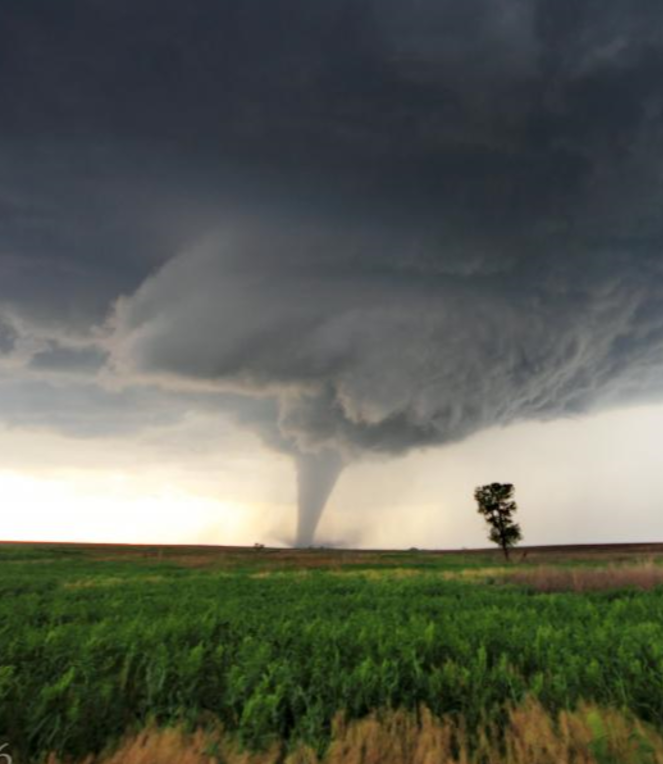
Two cold fronts will pass through the Northwest U.S. this week with the main impact being heavy mountain snow across the Cascades, and northern Rockies. A quick moving storm system will bring mixed precipitation including some freezing rain to the Upper Midwest and Great Lakes today then the Northeast U.S. tonight into Wednesday. Read More >



|
Monday Receiving Weather Information |
Tuesday Tornadoes |
Wednesday Lightning |
Thursday Wind and Hail |
Friday Flooding |
 |
 |
 |
 |
 |

NWS Kansas City/Pleasant Hill will issue a test tornado warning as
part of the drill. Local warning sirens, NOAA All-Hazards Weather Radio, and the Emergency Alert System (EAS) will be activated to signal the start of the drill.
The "TOR" code for EAS and NOAA Weather Radio will be used again this
year to simulate what would occur in the event of an actual tornado
warning.
The NWS encourages everyone to abide by health and safety guidelines, including social distancing and wearing a mask per local directives. If that's not possible during the tornado test, then consider participating by simply sheltering-in-place or discussing sheltering options/plans among co-workers/family members.
The purpose of the drill is to test everyone's readiness for life-threatening severe weather events such as tornadoes, flash floods, and damaging winds. Local
officials may sound warning sirens to initiate the drill.
Join Us In Becoming a Weather Ready Nation!
|
The Weather Ready Nation is about building community resilience in the face of increasing vulnerability from extreme weather events. Recent tornadoes, floods, drought, etc. demonstrate the need to be prepared. Are you weather ready? Here are resources to help you be prepared before disaster strikes.
NWS Severe Storm Safety | Missouri Storm Aware | Kansas Awareness Info | Ready.gov | SEMA
|
|
Deadly and devastating tornadoes have demonstrated their awful power in Missouri and Kansas. Now is the time to develop a tornado safety plan before a tornado strikes. Knowing what to do before a tornado occurs is essential to protect lives.
|
|
 |
Severe thunderstorms produce a variety of weather hazards including tornadoes, large hail, damaging straight line winds, flooding, and lightning. Now is the time to review Severe Weather Safety Information. Severe thunderstorms producing damaging winds in excess of 60 mph and large hail can be a threat to life and property. Damaging straight line winds are much more common than tornadoes and can be just as deadly. Those caught outdoors during a severe thunderstorm are particularly vulnerable. Boaters and campers should be especially alert to the potential of severe storms. High winds associated with severe thunderstorms can strike suddenly. Winds in excess of 60 mph can easily capsize boats and put campers at risk due to falling trees.
|
|
Typically, flooding results in more weather related fatalities than any other thunderstorm related hazard. Why? Many of the deaths occur in automobiles as they are swept downstream. Of these drownings, many are preventable, but too many people continue to drive across a flooded road. For more information go to the Flood Safety page. |
|

For each foot the water rises up the side of the car, the car displaces 1500 lbs. of water. In effect, the automobile weighs 1500 lbs. less for each foot the water rises. Two feet of water will carry away most automobiles!!!
 At any given moment, there are 1,800 thunderstorms in progress somewhere on Earth. This
At any given moment, there are 1,800 thunderstorms in progress somewhere on Earth. This
amounts to 16 million storms a year! In the United States, there are an estimated 25 million
cloud-to-ground lightning flashes each year. While lightning can be fascinating to watch, it
is also extremely dangerous.
Tragedies in school sponsored athletics are unfortunately a growing trend as well. When thunderstorms threaten, coaches and officials must not let the desire to start or finish an athletic activity or event cloud their judgment when the safety of participants and spectators is in jeopardy.
For more lightning facts and safety information go to the NWS Lightning Awareness page.
Social Media
Several NWS offices severe the regions of Kansas and Missouri. Below are links to their web pages and social media.
| NWS Kansas City | NWS Springfield | NWS St. Louis | NWS Topeka | NWS Wichita | NWS Paducah | NWS Davenport |
  |
  |
  |
  |
  |
  |
  |